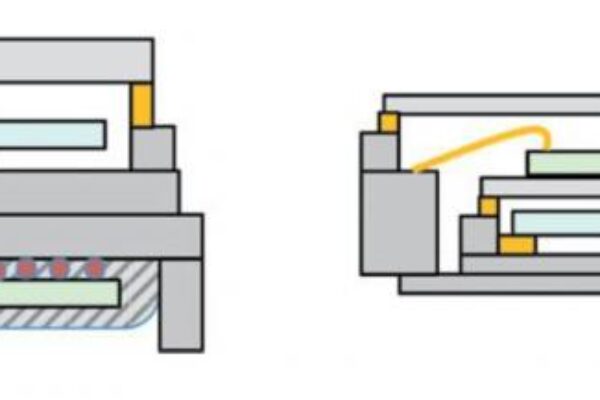
TCXOs: New instruments to orchestrate the future Internet
Due to the number of networked terminal devices, the data load on the internet is increasing rapidly. That is why the internet is to be gradually developed over the coming years to become a synchronous network.
The challenge involved is similar to that of an orchestra: the more difficult the piece and the larger the ensemble, the greater the need for a masterful maestro. When it comes to data transmission, the maestro is what we know as the master clock. This is usually an atomic clock whose timing is transmitted to the network nodes via radio, fibre optic cable or satellite.

But just like a musician who has to refer to his sheet music every so often, an individual node cannot always see the maestro – the master clock – and must therefore have a good sense of timing of its own. In music, it is essential that every instrument starts at the right time, plays at the correct tempo and that the music score is open at the correct page. In network synchronisation, the terminology for this is synchronisation of phase, frequency and time.
Synchronisation of network nodes
Whereas previously with Ethernet it came down to frequency synchronisation (data transmission at a constant rate), synchronous data transmission also requires correct timing i.e. phase synchronicity. A common, absolute reference – synchronisation of the time or date – is often less important; it is already provided by services such as GPS, anyway.
However, GPS is prone to disruption and that’s why either additional master clocks or a superb internal clock must be made available in order to bridge any interruptions. Since atomic clocks are prohibitively expensive for smaller data centres or home networks, high-precision crystal oscillators are relied on here. In smaller data nodes and mobile radio base stations, we often find what are known as oven-controlled crystal oscillators (OCXOs).
With these, the temperature dependency of the quartz oscillation is compensated by warming the quartz crystal to its upper turnover point (TOP) by means of a heating element and maintaining it constantly at this temperature.

quartz, TOP – turnover point.
OCXOs are excellent for maintaining stability across the entire temperature range; furthermore, their sensitivity to airflow is minimal. Although economical in comparison with atomic clocks, due to their complex structure they are still large and usually power-hungry.
A future alternative could therefore be temperature-compensated crystal oscillators (TCXOs). These consist of a voltage-controlled crystal oscillator (VCXO) and a temperature-dependent voltage regulator.

TCXOs – a future alternative
In the past, developers often didn’t consider TCXOs for high-precision applications due to their high sensitivity to airflow and their lower temperature stability. Today, however, some types achieve stabilities of ±100 ppb at -40 up to +85 °C – a scale within which some of the smaller OCXOs also operate. Their sensitivity to airflow has also been significantly improved.
Epson is one of the pioneers in this field with its patented DoubleSeal technology. In the TCXOs in their “G series”, the crystal is double encased in order to isolate it from external influences. The temperature sensor and the crystal are also in close proximity to each other, which has a positive influence on compensation. As a result of these features, the accuracy of modern TCXOs today is perfectly adequate for many wireless and wired transmission standards.
And since they also use little power, TCXO’s are an attractive option for all mobile applications. This makes them more than just a substitute for what has been tried and tested, because for developers they serve as a new instrument that can be employed as required to orchestrate their circuitry.

Advances in design
Airflow sensitivity and a lack of temperature stability are properties that previously blocked the way for temperature-compensated quartz oscillators in precision applications. Design features such as the DoubleSeal technology (double encasing of the crystal) have brought about significant advances.
Today there are TCXOs with an accuracy that fulfils the requirements of many wireless and wired transmission standards. In addition, they are modest in their energy needs and are therefore particularly attractive for use in mobile devices.
As an ITU-T member Epson is closely following and supporting the development of new networking standards and always happy to help find the right solutions for every application.
About the author:
Michael Fischer is Sales Engineer for Timing Devices at Epson Europe Electronics GmbH – www.epson-electronics.de
 If you enjoyed this article, you will like the following ones: don't miss them by subscribing to :
eeNews on Google News
If you enjoyed this article, you will like the following ones: don't miss them by subscribing to :
eeNews on Google News




